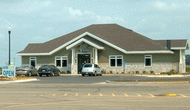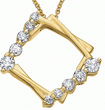Ephraimite
Forum
no.82

The Brit-Am Rose
Official Symbol of Brit-Am
For Previous issues see:
Ephraimite Forum Archives
Ephraimite
Forum
no.82

The Brit-Am Rose
Official Symbol of Brit-Am
|
Brit-Am Discussion Group |
Contents by Subject |
Research Revelation Reconciliation Contribute |
Site Map Contents in Alphabetical Order |
This Site |
|
 |
"KHAZARS
Israelite Tribes in Exile Pre-Publication Offer http://britam.org/books.html Click Here |
Extracts:
Avraham Biran, an archaeologist of biblical sites who excavated Tel Dan, an
ancient city along Israel?s northern border, and uncovered an unexpected stone
fragment bearing what might be the earliest reference to the House of David,
died on Sept. 16 in Jerusalem. He was 98.
Rina Castelnuovo for The New York Times
Avraham Biran in 1999. He wrote ?Biblical Dan,? a book about Tel Dan, the
ancient city in northern Israel that he excavated.
Dr. Biran?s death was confirmed by a spokesman from Hebrew Union College-Jewish
Institute of Religion in Jerusalem, where Dr. Biran directed the institute?s
school of biblical archaeology.
In 1993, after nearly three decades of digging at Dan, which is on the Syrian
border and near the headwaters of the Jordan River, Dr. Biran and his colleagues
discovered a foot-long piece of stone with a partial inscription in Early
Aramaic.
The archaeologists were able to decipher text on what was possibly a monument to
commemorate victory in battle by a king of Aram over Israel. The inscription,
which contained the words House of David, was dated to the ninth century B.C.
and was hailed by biblical scholars as a unique find and evidence of the
antiquity of King David's lineage. Some scholars, however, have questioned the
interpretation of the discovery and even the existence of King David.
Dr. Biran attributed the find to good luck and said that in archaeological
fieldwork, "it's all chance, whatever you do." Indeed, the earthen mound of Dan,
or Tel Dan, was chosen almost by chance. In 1966, Dr. Biran rushed to the scene
when Israel's military tensions with Syria were on the rise and the 50-acre
mound was in danger of being shelled or covered by fortifications. He persuaded
the Israeli Army to let him excavate Dan's southern slope and found signs of
human habitation dating from the fifth millennium B.C.
It was already known that the Bible, in the Book of Kings, refers to Dan as the
city of the Golden Calf. The Israelite king Jeroboam placed a gilded idol in a
shrine for his subjects to worship there, probably in the ninth century B.C.
Although Dr. Biran and his collaborators never found the calf, they did discover
the remains of a mud-brick city gate of the Middle Bronze Age and tombs from the
Late Bronze Age. After sifting through layers that contained pottery shards from
Roman times, they also established that Israelite tribes probably arrived in the
12th century B.C. and later used the site as a fortress for defending against
raids by Syrian tribes. He peeled away Dan's complex historical passage in a
book, "Biblical Dan."
Before beginning his work at Tel Dan, Dr. Biran had been a diplomat and
government official and had nearly died when he was working for the Palestinian
government in 1938. While riding in a military convoy, Dr. Biran's car rolled
over a land mine, which killed the three passengers in the back seat. Dr. Biran,
who was driving, emerged unscathed, as did a police officer next to him. They
staggered from the car, only to be attacked by gunmen, who shot the police
officer in the face.
In the 1950s, he served as Israel?s consul general in Los Angeles before being
appointed director of the Israel Department of Antiquities and Museums in 1961.
As director, Dr. Biran oversaw excavations and in the 1970s helped negotiate
publication of parts of the Dead Sea Scrolls, then held in the Palestine
Archaeological Museum in East Jerusalem.
Avraham Bergman was born in Palestine. He later changed his surname to Biran,
which is derived from a Hebrew word for capital. At the time, in the late 1940s,
he was a deputy military governor of Jerusalem, the capital of the newly formed
Jewish state. He received his doctorate in archaeology from Johns Hopkins
University in 1935.
In 1999, Dr. Biran reflected on the relevance of studies of ancient settlements:
"What is historical in the Bible is not for me to say. I will not enter into
that."
"All I will say," he continued, "is that if there is a reference in the Bible to
a city, Dan, what at an earlier time was called Laish, in the second millennium
B.C., I have such a city."
 |
Skewes Jewelry 
|
 |
 |
Contribute to Brit-Am
Correspond with us
Send Comments or Criticisms
You may not always receive an immediate answer but anything you say will be considered and appreciated
Send us an
e-mail
Books and Offering Opportunities
Main Page